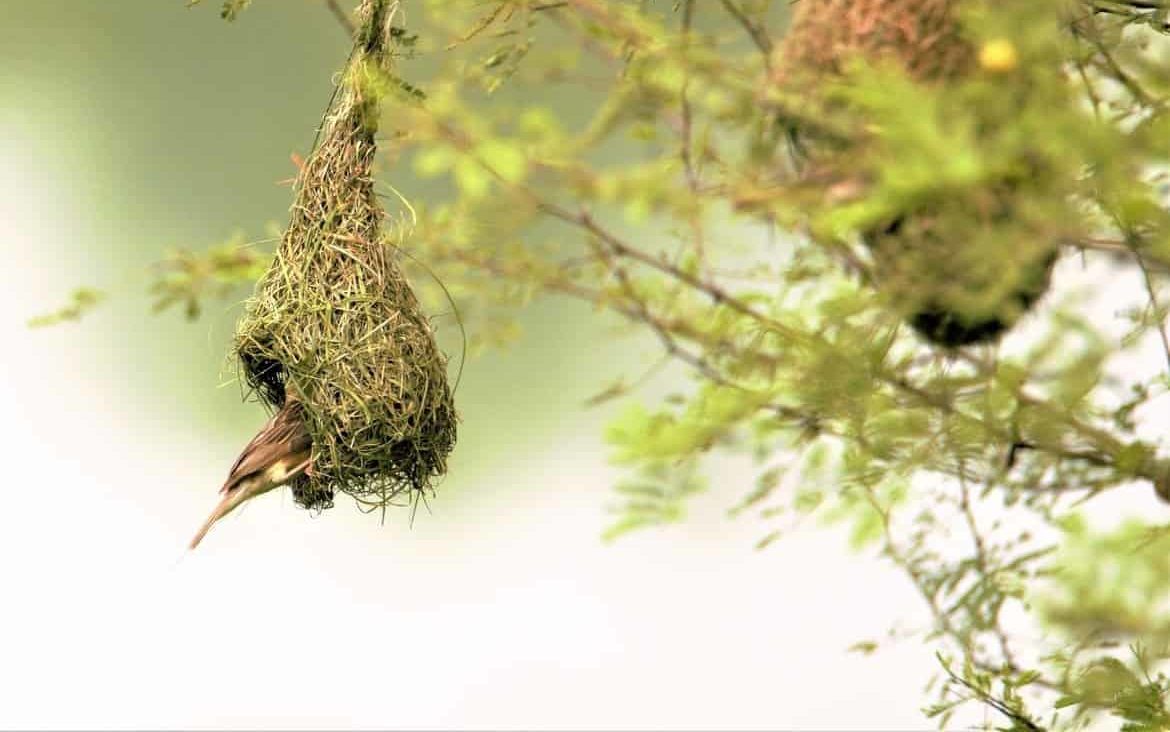Text and Photographs By W A Khan
Ameenpur Lake has become a safe haven for the weaver bird (Baya or Bunkar in Hindustani), the Architect of Nature. It is a small lake in Sangareddy district, about 65km from Hyderabad. It is the first Biodiversity Heritage Site to be approved in an urban area.
The weaver bird is famous for intricately weaving its wonderful nest.
After reading this article, you may not hesitate to call it a playboy bird too.
The weaverbird belongs to the family Ploceidae which means a large family of Old World Passerine birds that are predominantly African and resemble finches.
Larks, finches, crows, thrushes, starlings, etc. are classified as Old World Passerines. Passerines are perching birds similar to the house sparrow, which has three toes forward and one backward. Five species of this bird are found in southern Asia and nine in the Indian Ocean islands–Madagascar, Seychelles, Comoros, Mauritius.
It is famous for its nest-building abilities. It is the only bird that has been gifted by nature the ability to tie knots which make the nest strong and secure.
The nest is exclusively woven by a male using reed blades, plant fibers or twigs and soft grass for lining the inside of the nest for the comfort of chicks. It uses its strong conical beak and legs to construct the nest. The nest resembles an upside-down Surahi (an Indian earthen water jug) with a narrow tube-like structure at the bottom so that the predators cannot enter it. Some nests are ball type in structure. A male weaves the nest in monsoon to attract a female. It attracts females by hanging upside down from the nest calling and fluttering its wings signaling the female for mating. Monsoon is the season for mating.
A female weaver bird has emotions similar to that of a woman. She prefers a freshly built nest and compares her nest with those of others in the colony. If she finds it inferior, she will destroy it immediately and fly away in search of another architect. If she does not destroy, the male himself will destroy it out of rage.
A male builds from 5 to 10 nests for a female to pick a nest of her liking, if she does not pick any, the male destroys them all. It starts building new ones. Weaver birds usually build their nests over water bodies, over marshy land, or on thorny trees, hanging on the twigs of the trees so they are difficult to reach by predators.
The African sociable weaver bird builds one huge nest collectively where numerous birds live inside and breed. Some romantic ones, build their own individual love nests, they live in a colony with numerous nests on a single tree. A male can weave the nest in two days, some enthusiastic ones may even build it in one day.
Weaver Birds are polygamous, yes. The male is like a playboy. One male mates with seven females in one mating season. The female lays two to five eggs and hatches them for 13 or more days.
The main colours of weavers are black, yellow, red and brown. Males are often yellow and black while females are brown and buff-coloured. The size of the weaver bird in the Indian subcontinent varies from 18-60cm.
Weaver birds feed on seeds as well as on insects. They feed their chicks with insects because the chicks need the protein in insects to help them grow. The life span of the weaver bird is10 to 15 years. The oldest weaver in the wild was a Village Weaver species that was at least 14 years old. In captivity, a Village Weaver lives up to 24 years of age.






